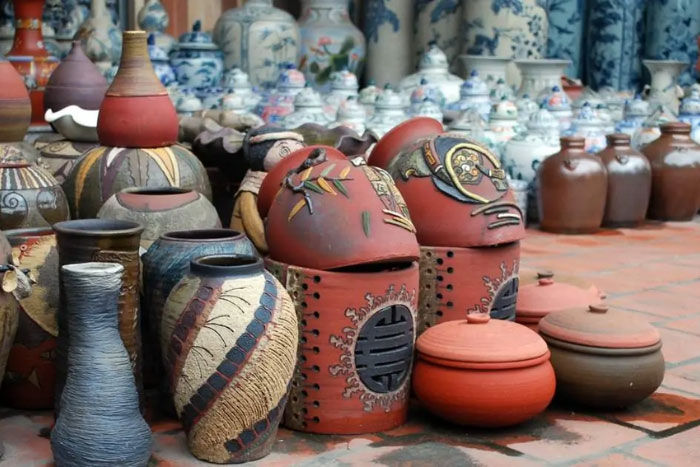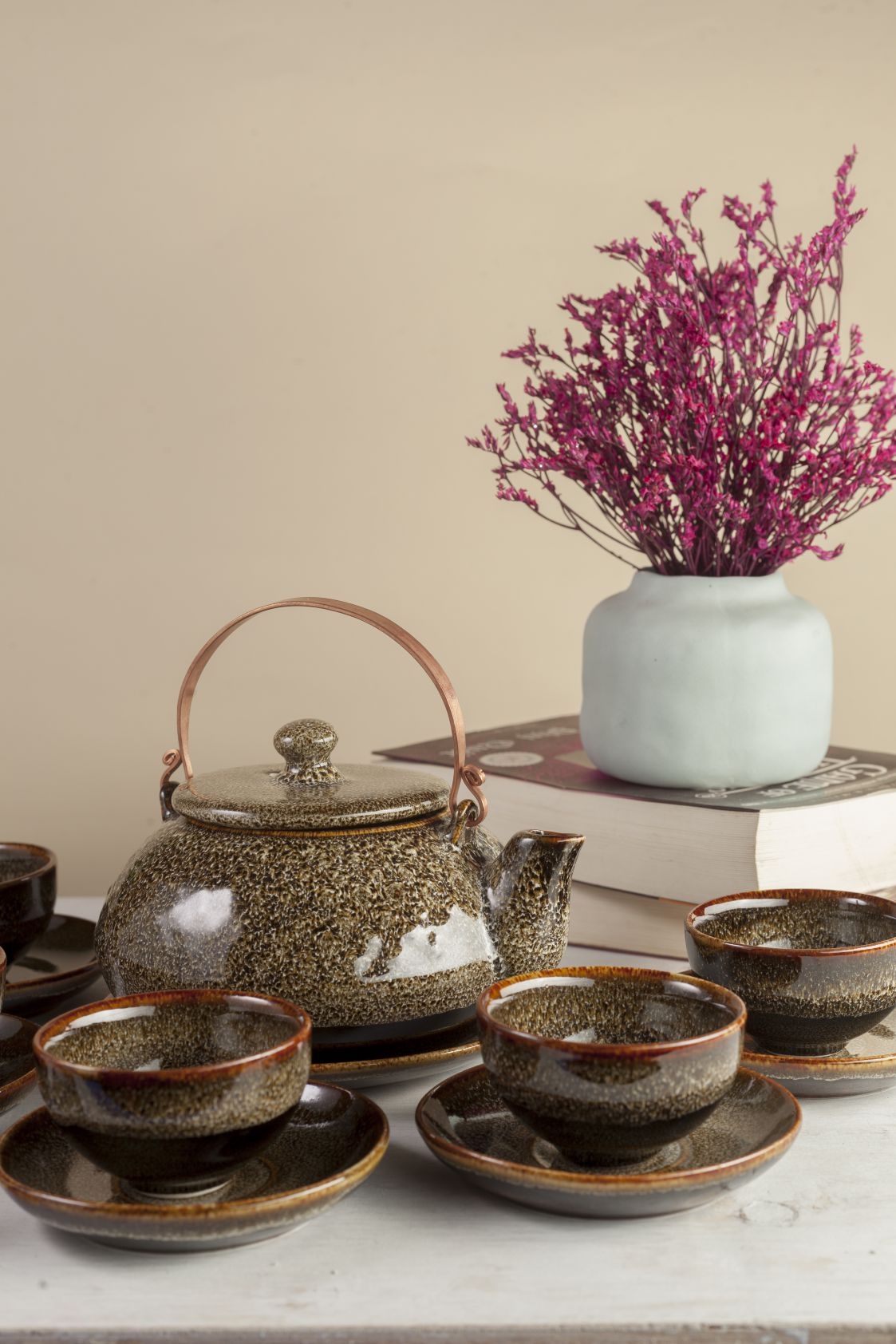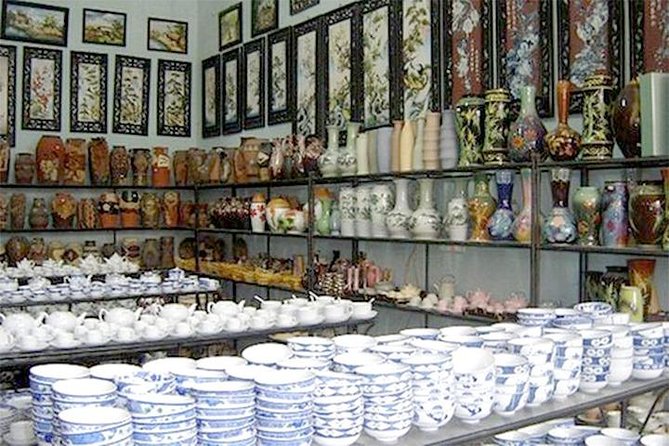News
Discovering the Charm of an Authentic Bat Trang Ceramic Shop – Timeless Craftsmanship and Unique Designs
Visiting an authentic Bat Trang ceramic shop offers an unparalleled experience that combines heritage, artistry, and practical beauty. Renowned for centuries, Bat Trang ceramics symbolize traditional Vietnamese craftsmanship with exquisite designs and enduring quality. Whether you’re a collector, interior designer, or simply a lover of fine art, understanding how to explore and utilize products from an authentic Bat Trang ceramic shop can transform your appreciation of ceramics.
In this article, we will dive deep into the world of Bat Trang pottery, exploring the history, artistic techniques, how to identify genuine pieces, and practical advice on choosing and using these ceramics. Let’s embark on a journey to discover why an authentic Bat Trang ceramic shop is not just a store but a portal to Vietnam’s rich cultural legacy.
The Rich History Behind Authentic Bat Trang Ceramics

Bat Trang pottery has endured for over 700 years, originating from the Red River Delta in northern Vietnam. This section unpacks the historical evolution and significance of Bat Trang ceramics before discussing its contemporary relevance.
Understanding the roots of Bat Trang ceramics enhances our appreciation of the skill, tradition, and cultural pride preserved within every handcrafted piece.
Origins of Bat Trang Village and Its Ceramic Tradition
The village of Bat Trang established itself as a major ceramic production site during the Ly and Tran dynasties. Its strategic location near the Red River allowed easy access to vital clay resources and transportation routes.
The villagers developed advanced techniques for shaping and firing ceramics, which contributed to their reputation throughout Asia. The traditional methods passed down through generations still influence today’s artisans, making a visit to an authentic Bat Trang ceramic shop a walk through living history.
Evolution Through Dynasties and Influences
Over centuries, Bat Trang ceramics absorbed influences from Chinese, Cham, and indigenous cultures, enriching its design vocabulary. The Ming and Qing dynasties especially impacted glazing techniques, leading to delicate blue-and-white patterns popularized worldwide.
Despite modernization pressures, Bat Trang potters retain much of their ancestral knowledge, integrating new styles without losing authenticity.
Contemporary Importance in Vietnamese Culture
Today, Bat Trang ceramics represent more than mere household items—they embody national identity, artistic expression, and economic vitality. Authentic shops remain hubs where locals and tourists alike connect with cultural heritage, supporting sustainable artisan livelihoods.
Identifying Genuine Pieces at an Authentic Bat Trang Ceramic Shop

Authenticity matters immensely when purchasing ceramics, and discerning true Bat Trang products requires keen observation and knowledgeable guidance.
This section guides you through identifying genuine ceramics by examining material quality, craftsmanship, and stylistic features.
Material and Clay Characteristics
Bat Trang ceramics are famous for their high-quality white clay sourced locally. When handled carefully, genuine pieces feel smooth yet sturdy, often with subtle color variations due to natural materials.
Scrutinizing the texture under bright light reveals whether the clay is pure or mixed with inferior substances. An authentic shop usually showcases transparency about sourcing, allowing buyers to appreciate this aspect.
Traditional Glazing Techniques
One hallmark of Bat Trang authenticity lies in its glaze application. Traditional glazing yields a glossy, even surface, often tinted in shades of celadon green, cobalt blue, or ivory white.
Look for consistency in glaze thickness and subtle imperfections indicative of handmade processes rather than factory-made uniformity. Some shops provide demonstrations of glazing to educate customers on this intricate art form.
Signature Patterns and Motifs
Classic Bat Trang motifs include lotus flowers, dragons, fish, and poetic inscriptions inspired by local folklore and Buddhism. These designs are either hand-painted or carved with remarkable precision.
Knowing common patterns helps buyers distinguish original works from mass-produced replicas. Authentic shops proudly display such patterns, sometimes accompanied by historical context or artist signatures.
How to Use Items from an Authentic Bat Trang Ceramic Shop in Everyday Life

Beyond collecting, Bat Trang ceramics blend functionality with aesthetic charm, ideal for enhancing daily routines and home decor.
Here, we explore practical ways to incorporate Bat Trang ceramics meaningfully.
Dining Elegance with Bat Trang Tableware
Using ceramic plates, bowls, and teapots from an authentic Bat Trang ceramic shop elevates meal experiences. Their durable glaze ensures food safety, while traditional designs add cultural depth to any dining table.
Pairing different pieces allows unique combinations, suitable for casual family meals or formal gatherings, reflecting an appreciation for art and utility.
Decorative Home Accents
Vases, jars, and figurines from Bat Trang artisan workshops make stunning focal points in living spaces. Their timeless aesthetics complement modern interiors, bridging past and present harmoniously.
Consider positioning ceramics near natural light, highlighting their glaze’s interplay with sunlight, and creating an inviting ambiance.
Spiritual and Ritual Uses
Many Bat Trang ceramics hold religious symbolism and are used in Buddhist altars or traditional ceremonies. Purchasing such items from an authentic Bat Trang ceramic shop ensures respect for cultural meanings and proper craftsmanship.
These objects serve as spiritual anchors and conduits for blessings, enriching the household’s sacred atmosphere.
Comparing Authentic Bat Trang Ceramics with Other Regional Pottery Traditions

For enthusiasts looking to expand their collection or knowledge, comparing Bat Trang ceramics with other Asian pottery traditions highlights distinct qualities and shared values.
This comparative view clarifies why Bat Trang holds a special place in both local and global markets.
Differences in Clay Composition and Firing
Bat Trang’s white clay contrasts with the red or buff clays prevalent in neighboring regions like Chu Dau or Thai Binh. Additionally, Bat Trang pieces often undergo higher-temperature firings, increasing durability and glaze refinement.
These technical factors create varying tactile sensations and longevity profiles, influencing collectors’ preferences.
Artistic Style and Symbolism
While Chinese porcelain emphasizes delicate blue-and-white scenes, Bat Trang designs often depict Vietnamese folklore with vibrant colors and versatile forms. The balance between decorative complexity and functional simplicity distinguishes Bat Trang ceramics.
Understanding these stylistic nuances enriches the appreciation of Southeast Asian ceramic diversity.
Market Position and Cultural Significance
Unlike mass-produced ceramics common in some countries, Bat Trang maintains family-run workshops focused on preserving heritage. This commitment fosters a marketplace valuing authenticity over cost-efficiency alone.
Consequently, pieces from an authentic Bat Trang ceramic shop command respect among connoisseurs and cultural historians alike.
Expert Advice for First-Time Visitors to an Authentic Bat Trang Ceramic Shop
Exploring a Bat Trang ceramic shop can be overwhelming due to the variety and craftsmanship level. Here are helpful tips to maximize your experience and investment.
Research and Plan Your Visit
Before heading to a Bat Trang ceramic shop, familiarize yourself with basic terminologies and popular product categories. This preparation enables more informed discussions with artisans and better selection outcomes.
Several reputable online platforms provide previews of collections, enabling targeted shopping trips.
Engage with Artisans and Ask Questions
Don’t hesitate to interact with craftsmen. They share invaluable stories about techniques, inspiration, and care instructions, enriching your connection with each piece.
Genuine shops encourage such dialogues, enhancing visitor satisfaction and trust.
Inspect and Test Products Thoroughly
Handle items carefully to assess weight, balance, and finish. Check for cracks or glaze chips, and confirm return policies if available.
Purchasing from an authentic shop often includes certificates of authenticity or detailed provenance, adding value.
Consider Long-term Care and Maintenance
Buying quality ceramics implies responsibility for proper upkeep. Ask about cleaning methods, storage recommendations, and repair options to prolong the life of your Bat Trang treasures.
Table: Comparison of Key Features Among Bat Trang and Neighboring Ceramic Traditions
| Feature | Bat Trang (Vietnam) | Chu Dau (Vietnam) | Jingdezhen (China) |
|---|---|---|---|
| Clay Type | Fine white clay | Buff-colored clay | Kaolin-based white clay |
| Firing Temperature | High (~1300°C) | Moderate (~1100–1200°C) | Very high (~1400°C) |
| Common Glaze Colors | Celadon green, cobalt blue | Natural earth tones | Pure white, blue-and-white |
| Typical Motifs | Vietnamese folklore, lotus | Simple geometric patterns | Elaborate floral, landscapes |
| Production Style | Handcrafted family studios | Semi-industrial | Large-scale factories |
| Cultural Significance | National heritage symbol | Regional craft | Imperial porcelain prestige |
Conclusion
An authentic Bat Trang ceramic shop embodies the fusion of centuries-old tradition, unparalleled craftsmanship, and vibrant Vietnamese culture. From its distinctive clay and glazing techniques to symbolic motifs and practical uses, Bat Trang ceramics offer both aesthetic delight and functional value. Whether you seek to enhance your dining experience or decorate your home with meaningful art, exploring authentic Bat Trang ceramics connects you to a timeless heritage. With thoughtful research, engagement with artisans, and attention to authenticity, any visit to an authentic Bat Trang ceramic shop promises not only beautiful purchases but also a profound cultural journey.
